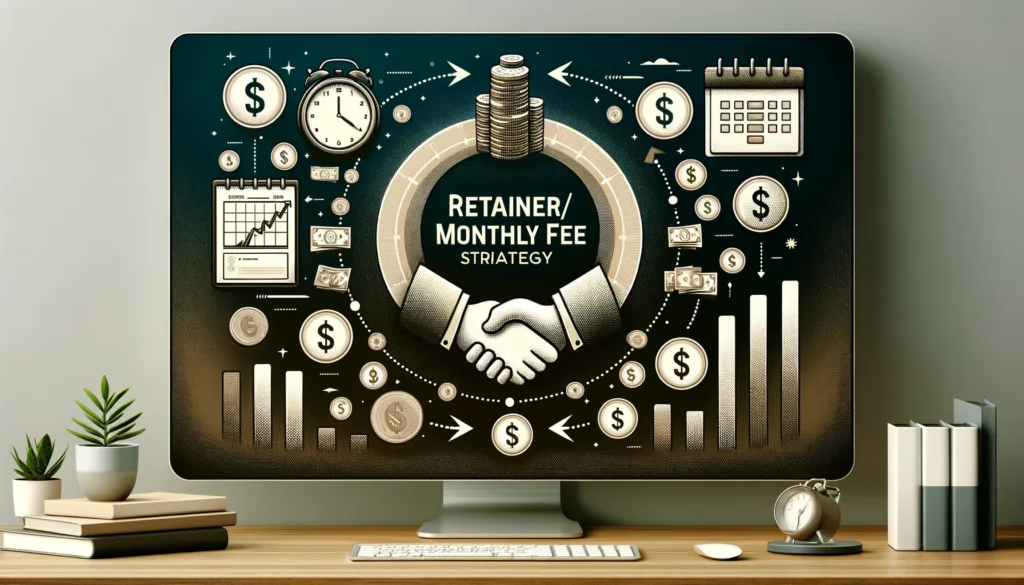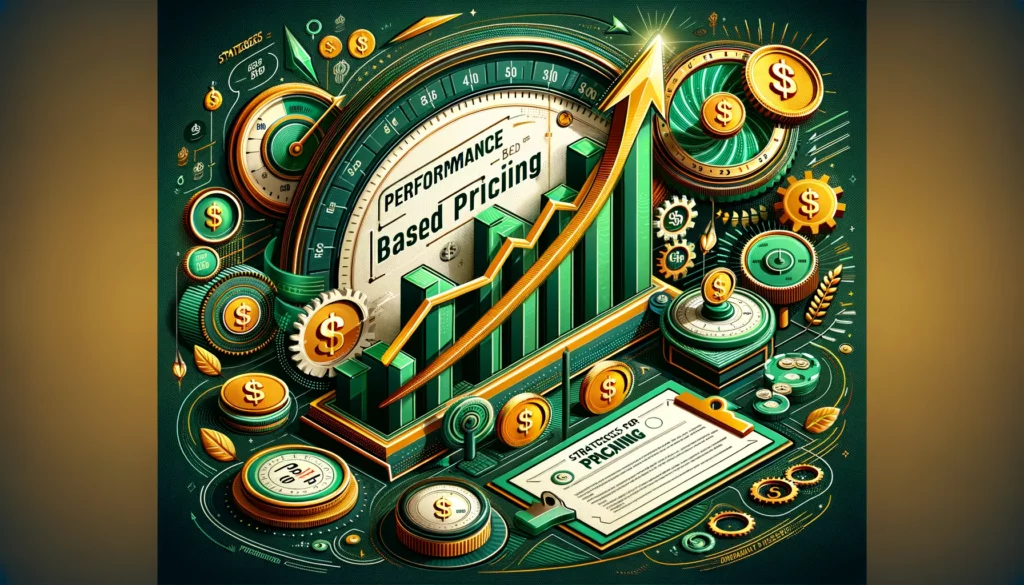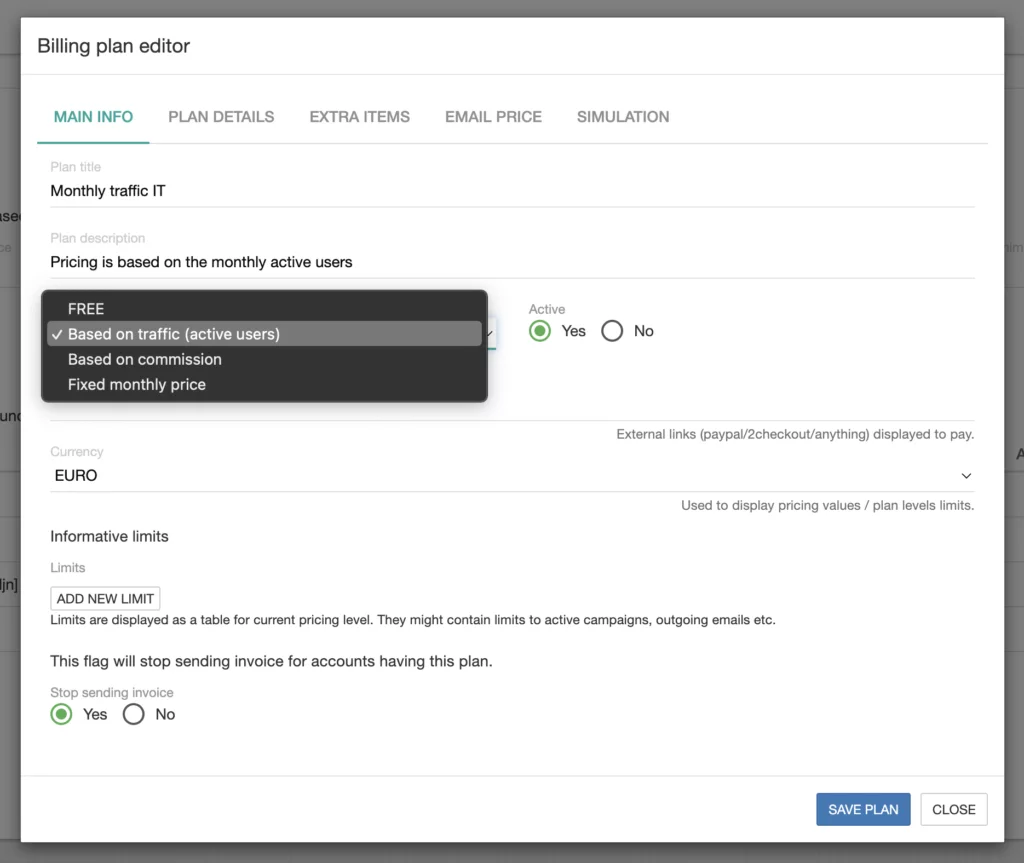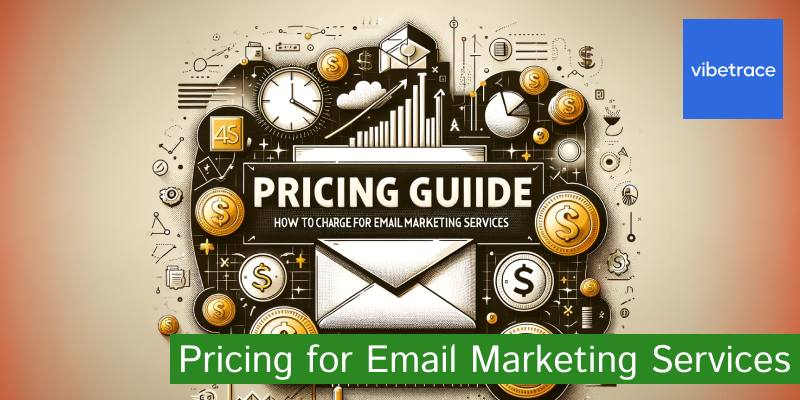Are email marketing services a lucrative endeavor? Can you price them well enough to turn profit?
That’s what we’ll answer in today’s article. The profitability of email marketing stems from its importance to businesses. From e-commerce to services, email marketing is one of the oldest and most efficient communication channels.
Through email marketing, businesses can stay in contact with their audience, communicate in real-time, and re-engage customers. It allows targeted messaging and audience segmentation. It’s also straightforward to measure, but, most importantly, email marketing is affordable.
But no matter how valuable the communication channel is, pricing related services can be challenging. Especially when considering the perceived ROI compared to the price companies pay for email marketing.
Pricing can vary depending on the jobs required of you and your team – from executing single campaigns and tracking their performance to building and managing entire email marketing strategies, from segmentation to copywriting.
To make it easier for you, we put together a detailed guide on pricing your email marketing services so that you can confidently build a profitable pricing strategy.
Understanding the Value of Email Marketing
Email marketing ROI can vary from industry to industry. On average, one dollar invested in email marketing can yield $40 in returns.
Keep in mind that larger businesses have lower ROI.
Does that sound counterintuitive? Larger businesses usually have massive email lists, their customer base is not very homogenous, and fewer people react to mass emails compared to the more homogenous and more engaged audience of smaller businesses.
Research shows that larger companies can reach around 10% ROI. Smaller businesses are the ones that can achieve more impressive results of around 30%. But why do brands care about it?
- Email marketing ROI indicates the quality of communication with a client base.
- It shows campaign profitability and can help identify gaps in segmentation.
- It helps brands gauge their reputation and customer engagement.
- But most importantly, brands can improve it with limited investments.
If you can do all that, you and your agency become an indispensable brand partner. But that’s also why pricing your services might prove trickier than expected.
Let’s check out the leading factors that affect pricing to give your strategy a starting point!
Factors Affecting Email Marketing Service Pricing
Sending a single email can cost anywhere from $90 to $700. To kick off your pricing strategy, consider the following:
1. Scope of Services
Email marketing doesn’t end with sending out a single email. As part of your services, you can:
- Develop an entire email marketing strategy, which requires you to get to know the business, research its competitors, and participate in results analysis;
- Focus only on the creative part, including copywriting, content development, creatives, and design elements;
- Manage only the technical aspects like working with the email marketing platform, email marketing automation, list management, and results analytics.
- All the above combined.
As you can see for yourself, depending on your services and how deeply involved you are with email marketing tasks, you can charge different fees.
2. Tools and Technology
Next, consider the email marketing platform you’ll use, and how much it costs. Does the client have a pre-existing subscription, or are you setting it up and paying out of pocket? Maybe you’re using your own platform, already paying for it, or a white label solution you introduce as your own?
There are plenty of SaaS and analytics tools you can use. If you’re searching for an optimal solution, look no further – VibeTrace provides an all-in-one email marketing platform.
Most digital marketing agencies and email marketing service providers establish contract-based partnerships with SaaS platforms to provide better conditions for their clients.
Remember that if the company already has an email marketing platform subscription, consider reducing prices.
3. Expertise and Experience
Experience sets the context for any pricing strategy:
- Novice marketers and newly launched agencies might attract customers by lowering their fees.
- Agencies with a track record, successful campaigns, and recommendations from previous clients can charge top dollar.
But remember – sometimes offering the lowest price might make people question the quality of your services. Strike a careful balance, considering all the factors we cover in this guide.
4. Client’s Industry and Size
Consider the industry and the size of the client’s list. Does it need significant segmentation? How competitive is the industry? Depending on the products or services you promote through email marketing campaigns, it might require a higher level of personalization.
All this corresponds to more effort and more time invested in the job. The more resources, including time, effort, and money you must invest in specific campaigns, the easier it will be to justify a higher price.
Now that you know what factors impact pricing the most, let’s see what pricing models you can consider!
Pricing Models for Email Marketing Services
Building a reasonable pricing strategy for your email marketing services doesn’t have to be complicated to yield the best possible results. Here are 4 distinct pricing models you can use:
1. Hourly Rates
Hourly rates are popular with freelancers, especially when working within smaller teams. An agency can usually provide a detailed breakdown of the time the tasks might take and price them accordingly.
That approach provides transparency for the client and guarantees that you’ll be compensated accordingly for the time you invest in the work. The main downside of hourly rates is that the client might constantly urge you to work faster, overcome by the feeling that you’re taking too long on purpose.

To offset the main drawbacks of hourly rates, use this pricing model only when taking smaller, straightforward projects with tasks you can easily track for time.
2. Project-Based Pricing
Some clients require an upfront estimate of what an email marketing project might cost them. They need it to keep a closer eye on the ROI and costs associated with that communication channel.
When you come across such a client, you can consider the scope and difficulty of the project, as discussed earlier, and set a specific price. That guarantees you that if you complete the required tasks, you’ll get fairly paid.
That pricing model is most suitable for medium-sized and single-campaign projects. They’re easier to price based on the tasks that will be completed.

Still, beware of scope creep and the sudden appearance of new requirements. Set those in stone beforehand and make sure there are clear conditions that would allow for mid-execution changes.
3. Retainer Models
The retainer model is suitable when entering a long-term partnership with a client. It’s best for situations when you provide a service beyond email marketing.
For example, if you provide a comprehensive service in several digital marketing aspects like SEO, content marketing, PPC, and email marketing, you might want to request a monthly retainer. That guarantees the business your availability and guarantees you compensation for that availability.

On the downside, that might limit your ability to onboard new clients and expand your client base.
4. Performance-Based Pricing
Finally, consider performance-based pricing. It’s linked to the campaign results and has two sides. On the one hand, if you’re confident in your skills and you know the niche can turn a profit, setting fees as a percentage of campaign revenue might be a good idea.

On the other hand, one poorly performing campaign might lead to financial difficulties for your agency. To offset that danger, consider performance-based pricing only when you’re confident in the results.
How to Calculate Your Costs?
To put a reasonable price tag on your services, there are three more factors to consider directly related to costs and revenue. Those are:
- Direct Costs – the spending associated with software subscriptions, salaries for the people in your agency, costs related to sourcing content and designs for campaigns, and anything else related to performing operational tasks. There’s more guesswork involved in calculating direct costs since some might fluctuate.
- Indirect Costs – the ones associated with running your email marketing or digital marketing agency. They’re usually fixed, and you can calculate them based on previous months. That includes overhead such as rent, Internet and utilities, and marketing spend related to promoting your agency and sustaining its digital “home”.
- Profit Margin – finally, consider the profit margin you want. Research shows that email marketing agencies set 15% to 30% profit margins, depending on direct and indirect costs. If you have higher costs, you can’t afford high profit margins. That hampers business growth and sustainability. High costs with a high profit margin might make your services undesirable.
Competitor Analysis and Market Rates
Price your services in such a way that you stay competitive. If fees don’t correspond to those of your direct competitors, you risk losing customers.
Unless you have a unique selling point, something to differentiate you from the competition, your pricing strategy must align with theirs. That’s because:
- If you price too high, you’ll lose potential customers because the competition can offer a better price for the same services;
- If you price too low, you’ll lose potential customers because they might think there’s something wrong with the quality of your services.
That’s why you need to regularly compare your pricing models with those of the competition. Most digital marketing and email marketing agencies disclose pricing on their website. You can consider their individual services or service bundles.
Those that don’t disclose pricing on their websites, usually have a form for requesting a quote for specific services.
To carry out proper competitor analysis, consider your ideal client and pinpoint direct competitors based on the scope of services. Most importantly – stay flexible. If your pricing model’s not getting customers, be ready to adjust.
You won’t have to adjust your prices often when you meet two conditions:
- First, you’ve made a thorough competitive research and can compete;
- And second – you clearly communicate value.
How to do the second? We’ll see in the next section!
6 Tips for Communicating Value to Clients
Email marketing is lucrative. However, since sophisticated email marketing platforms like VibeTrace offer drag-and-drop email building, some companies think they can make it on their own.
Communicate value through your website and service descriptions. Here are 6 tips to help you do that:
- Show Case Studies – if you have a track record, demonstrate the results you can generate in relevant niche segments. If you can generate high ROI, don’t hide it. Your ability to deliver results will be enough justification for the pricing strategy.
- Demonstrate Expertise – emphasize the experience of your team. If you’re working with experts, mention it and share their expertise and track record.
- Clearly Outline Services – make a comprehensive outline of your services. Those might involve only email marketing services and anything beyond that. If you require higher fees, you must provide additional value, even make exclusive service packages on a client-to-client basis.
- Be Transparent – don’t hide anything in small print. Agencies build sustainable customer relationships on transparency and trust. Update customers on campaign performance and be open to communication and feedback.
- Offer Personalization – be ready to personalize your services and be flexible when accommodating client’s needs. Companies are willing to pay more when they’re sure they’ll get exactly what they require of a marketing agency, even if that means developing service packages on a client-to-client basis.
- Offer Continuous Optimization – commit to optimizing results. Launching an email campaign doesn’t end with hitting Send. Companies will be happy to enter a long-term partnership and pay more to keep you around if you commit to providing a comprehensive service that delivers tangible results.
Communicating value is at the foundation of lasting and profitable client relationships. If you want to succeed in justifying your pricing, build trust and be transparent.
Adjusting Your Pricing Strategy
A pricing strategy has to remain stable, but you should always be ready to correct it. Changes in job scope, market shifts, and even inflation can affect the price of services. That’s why:
- Keep an eye on factors affecting revenue that might necessitate pricing changes.
- Keep an eye on your competitors and their pricing models.
- But most importantly, keep an eye on your clients.
Are they happy with the results of your work? What feedback’s coming from them regarding perceived ROI compared to what they pay for your services?
That will give you the bigger picture, and you can spot the wiggle room in which you can grow. But don’t forget to always be transparent with your clients when considering price changes, including the pricing model you use, and make sure you can justify them.
How Vibetrace White Label can help you with this
Our white label solution for agencies is very flexible in terms of charging your customers. You can create multiple pricing types and use them differently with your customers.

Billing Plan Editor give you the opportunity to select from a lot of options. You can charge based on:
- number of active users
- based on commission (percentage of total assisted sales)
- fixed monthly price

We help you from end to end to provide the best services with us. Click here for more info and demo videos on the White Label solution
To Wrap Up
A working pricing strategy for your email marketing services is crucial for growth and sustainability. You need to make sure there’s a point to all your effort. Your clients must believe they’re getting the most out of their investment.
When choosing a pricing model and setting different price points, consider the variety of factors we introduced in this guide.
Consider the required jobs to complete, the length and complexity of tasks, and the tools you’ll need to use to achieve results.Don’t hesitate to research competitors, evaluate your effort, and factor in fixed costs. Start evaluating and adjusting your pricing strategy today!

